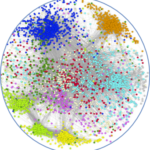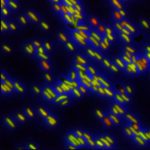Link to Pubmed [PMID] – 32950907
Link to DOI – S0223-5234(20)30793-510.1016/j.ejmech.2020.112821
Eur J Med Chem 2020 Sep; 207(): 112821
Several phenanthrolinic analogs of quinolones have been synthesized and their antibacterial activity tested against Mycobacterium tuberculosis, other mycobacterial species and bacteria from other genera. Some of them show high activity (of the range observed for rifampicin) against M. tuberculosis replicating in vitro and in vivo (infected macrophages) conditions. These derivatives show the same activity with all or several M. tuberculosis complex bacterial mutants resistant to fluoroquinolones (FQ). This opens the way to the construction of new drugs for the treatment of FQ resistant bacterial infections, including tuberculosis. Several compounds showed also activity against Staphylococcus aureus and probably other species. These compounds do not show major toxicity. We conclude that the novel phenanthrolinic derivatives described here are potent hits for further developments of new antibiotics against bacterial infectious diseases including tuberculosis in particular those resistant to FQ.




